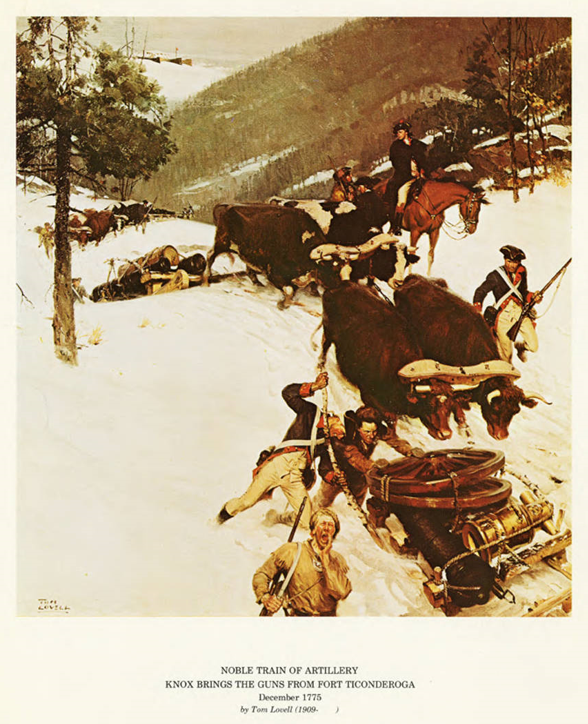Challenges are everywhere in 2020. But the utility industry has a long tradition of service to the communities in which we all work, and that spirit of service seems to reveal itself most prominently during times of exceptional challenges. Whether driven by necessity or an innate desire to help those in need, we draw strength from the example of those who’ve gone before us in the service of others.
This painting by Tom Lovell hangs near my desk at home. It depicts a scene from December of 1775, during the American Revolution. Clearly, those soldiers weren’t concerned with overhead conductors or buried pipelines, nor anything else related to today’s utilities landscape. But this scene, which depicts an astonishing event in American history, provides a powerful example of service, perseverance, and resilience in the face of challenging times.

When George Washington took command of the Continental Army in the summer of 1775, many of his officers had no formal military training and few had any combat experience. Henry Knox, a 25-year-old bookseller from Boston, was a prime example of this. But he read a lot of books on warfare and became a self-made expert on artillery. Surely that would suffice when pitted against the foremost superpower of the day, right? But Washington saw something in Knox’s leadership ability and would later select him to command all of his artillery forces.
As 1775 was nearing a close, the Americans were desperate to dislodge the British regulars from Boston. Knox approached Washington with an idea so outlandish that it was thought nearly impossible. He proposed to take a small force to remote Fort Ticonderoga in far northern New York. Ethan Allen had captured Ticonderoga for the Americans earlier that year. There Knox would select 58 cannon and haul them, over land, 300 miles back to the heights above Boston. And he would do this in the middle of winter, without any existing logistical support, while crossing lakes, rivers, mountains, and gorges, in the harshest conditions imaginable.
The roads – where any existed – were mostly unimproved tracks that could barely convey a simple wagon, let alone sleds of multi-ton artillery. To aid in dragging such a load, he needed firm ground, adequate snow, and consistently sub-freezing temperatures to ensure strong ice for crossing numerous rivers and lakes. Instead, he often got either raging blizzards or debilitating mud. At one point, the teamsters he had hired along the way decided to quit due to the horrendous conditions and impossibly steep terrain over the Berkshire Mountains. They ultimately stayed due to Knox’s skillful leadership in the face of dire circumstances.
Knox completed this impossible task, delivering his “noble train of artillery” to Washington in late January of 1776. Washington then secretly emplaced the guns of Ticonderoga on Dorchester Heights overlooking Boston. The entire preparations and emplacement were accomplished during a single night’s operation to preserve the tactical advantage. The British awoke the next morning to discover their entire force, including their large fleet anchored in the harbor, utterly vulnerable to American artillery. Thus began the British evacuation of Boston.
During the remainder of 1776, the Americans suffered crushing defeats, many of which were presumed to end the revolution on the spot, but there would be other feats of incredible perseverance (and victories) before the year was out and throughout the rest of the war.
Numerous books have described the inspiration and motivations that fueled the ultimate American victory in the face of incredibly long odds. But I believe it was their spirit of service – to country, to each other, to a higher purpose – that was at the heart of their determination to simply keep going.
If there is an analog to our current times and challenges, I think it is this: The spirit of service that you bring to the utility industry, which is so essential to every community, is what allows you to overcome nearly any challenge, any natural disaster, any mass outage, any pandemic, and yes – any technical challenge. Software implementations are hard work. GIS implementations can be especially hard. Their success is determined only partly by skill and experience. The determination that comes from a spirit of service is what gets you (and SSP as your partners) to the finish line.


What do you think?